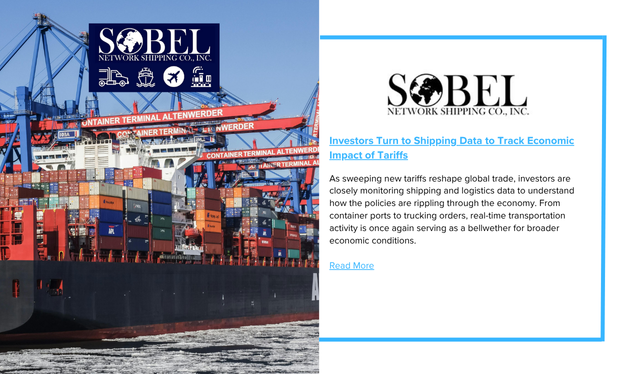As sweeping new tariffs reshape global trade, investors are closely monitoring shipping and logistics data to understand how the policies are rippling through the economy. From container ports to trucking orders, real-time transportation activity is once again serving as a bellwether for broader economic conditions.
Container Volumes Surge, Then Stall
U.S. businesses recently accelerated import activity, particularly through Southern California ports, in anticipation of higher duties. This pull-forward of inventory has temporarily driven up container traffic through the ports of Los Angeles and Long Beach—primary entry points for goods from Asia. However, officials expect a sharp decline in May as companies slow new orders to assess the impact of the tariffs.
Bookings for trans-Pacific shipments have already dropped significantly, with some logistics providers reporting a 60% fall in container movements from major Asian manufacturing hubs to the U.S. Cancelled sailings have become increasingly common, with nearly 30% of Pacific voyages scrapped in early May. Port officials estimate a 35% decline in import volumes year-over-year during the same period.
Truck Orders Signal Caution
Truck manufacturers and freight operators are also signaling caution. North American net orders for Class 8 trucks fell to 16,500 units in March, down nearly 6% year-over-year. Order cancellations hit their highest level in almost two years, and dealer inventories are now at record highs.
Analysts note that trucking companies are scaling back investment as freight rates remain low and demand uncertainty grows. Some trucking firms are comparing current profitability to levels seen during previous financial crises.
Supply Chain Index Hits Five-Year Low
A global supply chain index tracking demand, inventory, and transportation costs dropped to its lowest level in five years this March. The decline reflects a contraction in North American manufacturing activity and heightened caution from companies preparing for increased costs and weaker consumer spending.
Consultants anticipate the next reading will show further contraction as businesses delay purchases and reassess their logistics strategies amid shifting tariff policies.
Transportation Stocks Under Pressure
Market sentiment is echoing the challenges on the ground. The Dow Jones Transportation Average—which tracks freight, rail, and logistics companies—has underperformed the broader Dow Jones Industrial Average by more than nine percentage points this year, marking one of the steepest relative drops in a decade.
Publicly traded freight operators have seen sharp declines in share prices as investors price in weaker volumes, disrupted trade flows, and rising costs.
Looking Ahead
As businesses continue adapting to the evolving tariff landscape, analysts and investors are expected to rely even more heavily on shipping, trucking, and supply chain performance data. These metrics offer some of the earliest indicators of real economic shifts—well before traditional financial reports or consumer data reflect the full picture.


